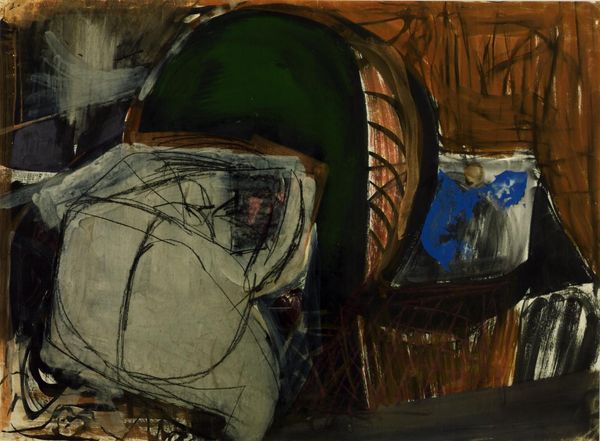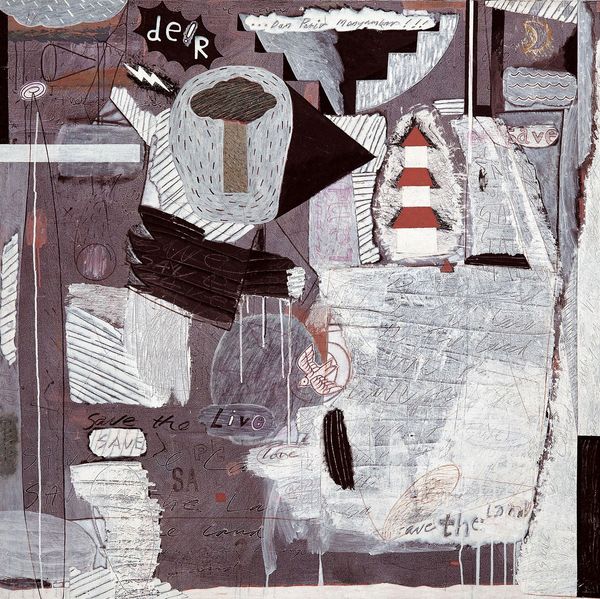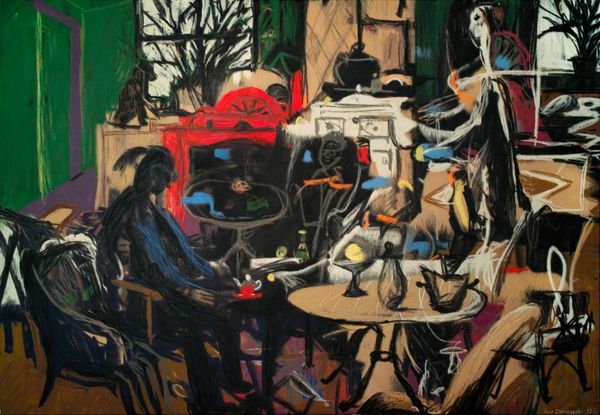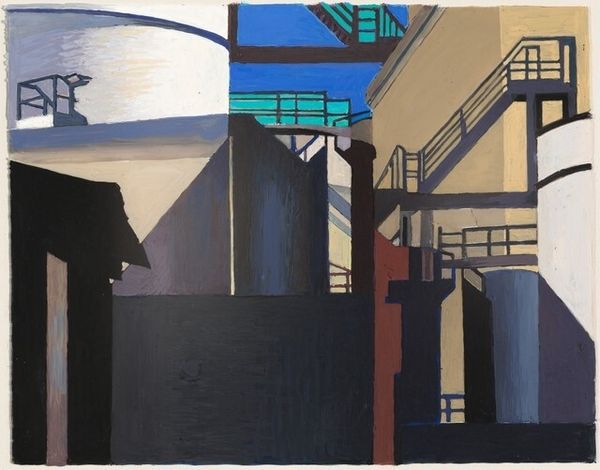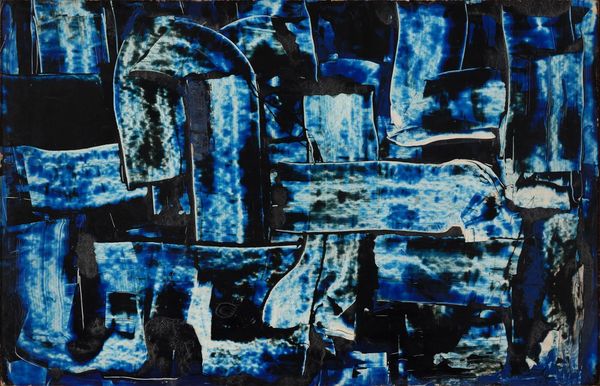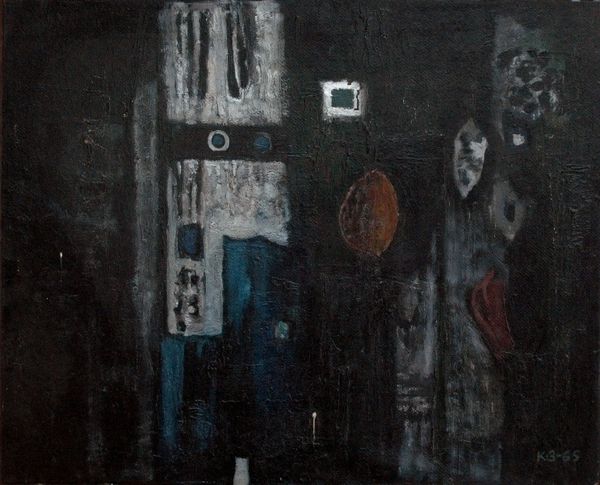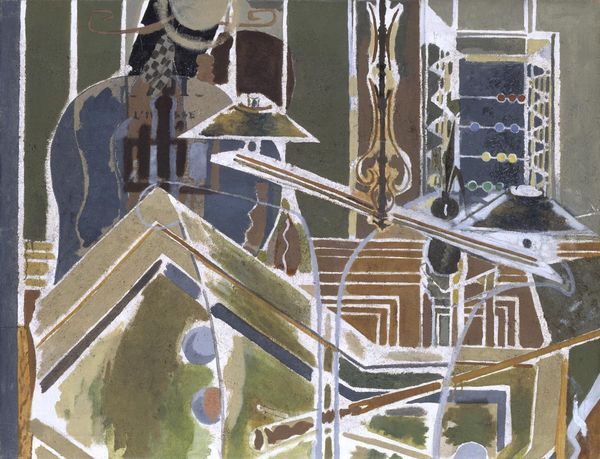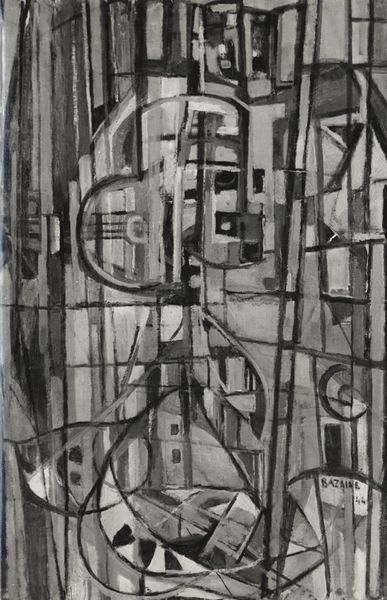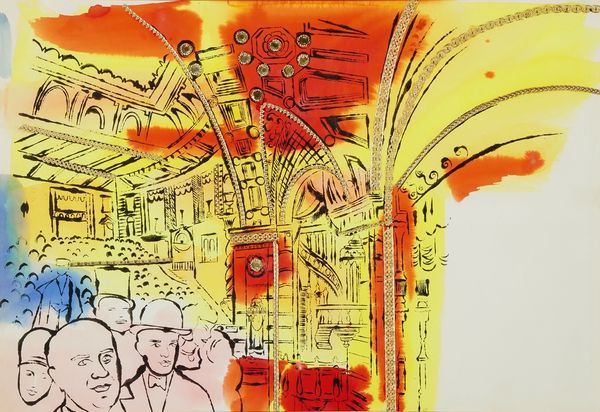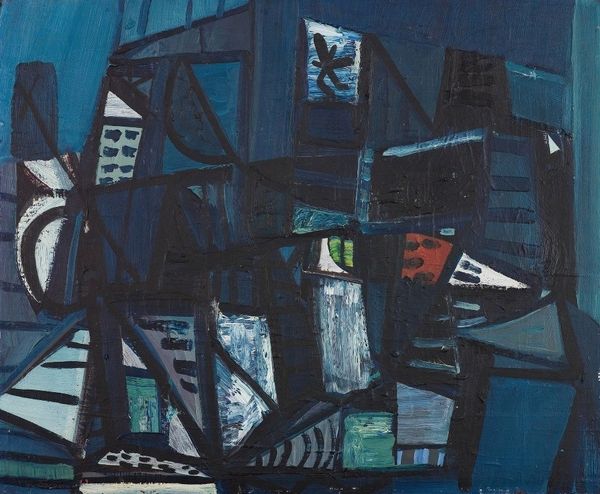
painting, oil-paint
#
urban landscape
#
urban
#
painting
#
oil-paint
#
landscape
#
german-expressionism
#
figuration
#
expressionism
#
cityscape
#
modernism
Copyright: Public domain
Curator: Looking at Max Beckmann's "The Harbor of Genoa," painted in 1927, the first thing that strikes me is the strange dichotomy between its vivacity and melancholy. Editor: I concur. It feels spatially compressed, almost claustrophobic. The arrangement of forms is disjointed. Note the hard delineation of planes: an unmodulated field here, heavy impasto there, and then dark outlines encompassing everything. Curator: Beckmann, situated within the New Objectivity movement and linked to German Expressionism, provides us with a unique perspective on early 20th-century European cities. Editor: There is clear reference to modernist conventions but rendered with decidedly somber color schemes and tonal arrangement that serve to create dissonance rather than harmony, an emotional unease. This seems far removed from traditional cityscapes. Curator: He’s presenting a city influenced by historical events, perhaps the looming pre-war era. Look at the buildings packed together and looming over the harbor, each shape an individual geometric element in a disquieting whole. The foreground seems like a theatrical proscenium. What do you make of this effect? Editor: It appears constructed and artificial, but the harbor itself is vibrant with activity. This tension between reality and representation permeates the work and extends into social commentary concerning cultural upheaval and loss within increasingly dense population centers. There appears little breathing room. It speaks volumes of our period's aesthetic response to rapid industrialization as the relationship of man and city change irrevocably. Curator: A good point. It encourages us to contemplate how this vision contrasts and compares with the artist's life. His exile during WWII certainly altered him but, he seemed to maintain creative flexibility while representing this period of change for decades before, if we analyze compositional attributes. Editor: Overall, it offers a complex dialogue between observation, representation, and a pervasive sense of the modern condition through these juxtaposed urban structures, creating lingering impact. Curator: Absolutely. His calculated brushwork and structural arrangement achieve just this effect as his perspective invites inquiry and further reflection for any contemporary audience member.
Comments
No comments
Be the first to comment and join the conversation on the ultimate creative platform.
